
Trial in the Wilderness
Sycamore Creek Church
Tom Arthur
March 17/18, 2013
Numbers
Peace Friends!
Leading Sycamore Creek Church has pushed me into becoming more of a risk taker, but I am not by nature much of a risk taker. When I have succeeded, it has not been by taking risks, but by working hard and persevering.
The official Methodist statement on gambling is that it is a menace to society and destructive of good government, but my dad wasn’t a Methodist so when we were growing up he took us to the horse track on vacation and gave each of us $20 to bet on the races throughout the day. My brother would bet on the long shots. He got lucky and won once. But he lost it all the next race. On the other hand, I would make the safest bet you could make. I’d bet on the for-sure horses. I’d not only bet on the for-sure horses, I’d bet that they would place (get 1st, 2nd or 3rd). I walked away that day having won seven of ten races and with $25 in my pocket! I was no risk taker.
I suspect many of you are like me. Many of you run into this problem on a regular basis: the unknown trial is worse than the known trial. You’d rather stick with what you know than venture out and risk something that you don’t know.
We’re in a series called In the Wilderness, and we’re looking at the book of Numbers in the Bible. “Numbers” is the English name for this book, but “In the Wilderness” (or “bu-med-bar”) is the Hebrew name for the book. The book of Numbers or In the Wilderness is the story of the Hebrew people who have come out of slavery in Egypt and are wandering around in the wilderness for forty years on their way to the Promised Land. By the end of the book, there are only two people, Joshua and Caleb, who are left who were present at the beginning of the book. This is due entirely to their own proclivity to choose the known trial (the wilderness) over the unknown trial (conquering the giants in the Promised Land).
We as a church are in a wilderness of sorts. Like the Hebrew People we do not have a solid home. In the wilderness, the Hebrew people set up and tore down a tent whenever they wanted to worship. The tent was called the tabernacle. Like the Hebrew people, we set up and tear down our tabernacle every week. The Hebrew people wandered in the wilderness for forty years. We have been wandering for twelve years. I liken our experience to this: it’s like we have been car-camping for twelve years in the same campground at the same campsite every Sunday morning for six hours.
There are naturally some things we have struggled with.
- How to staff set-up and tear down crews.
- How to keep these crews motivated.
- How to navigate shared equipment/technology/space with Lansing Christian School.
- How to improvise when things break down.
- How to turn a cafetorium into a “tabernacle” for worship.
- How to explain where we’re at. “We meet at Lansing Christian School.” Blank stare. “It’s near Jolly & Dunkel.” Blank stare. “By Trinity Church.” Light bulb goes on.
- How to deal with the impression that we worship at our office.
- How to decide what’s next?
If you’re a guest here this morning I want you to know something: we do all this to serve you! I was recently asking our volunteers why they do this. I got answers all over the board. Some people have been volunteering for twelve years because they feel like they worship better when they’re serving. Others volunteer because they feel compelled or called to do so. Others volunteer because it builds community. All of us volunteer to serve the guest. We are fiercely focused on the guest among us. We get up early on Sunday morning and we persevere in the wilderness of not having our own space so that we can create an environment where you can encounter God! And yet in the midst of this unified motivation, there are still struggles and trials. What I want to do is look at the trials and struggles that the Hebrew people encountered while they wandered in the wilderness and see if there is anything we can learn as a community about what God is up to in our own “in the wilderness” time.
1. The wilderness is a time when leaders lead and work is shared.
Numbers 11:24-25 NLT
Moses went out and reported the LORD’s words to the people. Then he gathered the seventy leaders and stationed them around the Tabernacle.And the LORD came down in the cloud and spoke to Moses. He took some of the Spirit that was upon Moses and put it upon the seventy leaders. They prophesied as the Spirit rested upon them, but that was the only time this happened.
Moses is the primary leader of the Hebrew people. God has a very special relationship with Moses. We’re told that God speaks to Moses “face to face” “like a friend.” It seems that in most churches, God does not give vision to a committee but gives vision to a leader. God calls and equips a leader with a vision for where this community can and will go. This is not to say that the leader lords it over everyone or that leadership is not shared in many ways. We see in the passage above that God shared the Spirit of leadership with many others so that Moses didn’t burn out. The work of leadership is shared.
Here’s how this tends to work in our church. When I came to SCC, I was given a job description that included the expectation that I would be a vision seeker and vision caster amongst us. I seek God’s vision in several ways. I spend time daily in prayer and scripture reading. I take spiritual retreats of silence and solitude regularly. I listen to other church leaders about what God is doing in their churches. I read continually across all kinds of disciplines to learn about our culture and to ponder how God might be at work in our culture. I go to conferences for church leaders. And I listen to all of you. In each of these ways I’m seeking out God’s vision.
What usually happens for me is when I am not looking for it, an idea or image forms in my mind that quickly forces its way to the surface and brings together all of the different conversations I’ve had. I usually write it down and then bring it to the rest of our leadership. If they think this is God’s vision for us, then we bring it to a vision meeting and present it to you. We are testing the vision at these vision meetings. The testing of these visions usually goes beyond the actual meeting. It continues on in informal ways through email, face to face conversations, in small groups, and the like. The next time the leadership meets, we ask the question: what are you hearing Sycamore Creek Church say about this vision? We make a discernment call at that point about whether this is God’s vision for us that we’re ready to move on or whether it is best to wait. In this way, God’s vision comes to a leader, is shared with other leaders, is tested among the community, and then finally acted upon by the leadership.
But it’s not only the work of leadership that is shared. All the work is shared. Listen to how the work of setting up and tearing down the tabernacle was shared:
Numbers 3:8, 25-26, 31, 36-37 NLT
The Levites will also maintain all the furnishings of the sacred tent,serving in the Tabernacle on behalf of all the Israelites… The Gershonite clans were responsible to care for the tent of the Tabernacle with its layers of coverings, its entry curtains, the curtains of the courtyard that surrounded the Tabernacle and altar, the curtain at the courtyard entrance, the cords, and all the equipment related to their use…The Kohathite clans were responsible for the care of the Ark, the table, the lampstand, the altars, the various utensils used in the sanctuary, the inner curtain, and all the equipment related to their use…The Merarite clans were responsible for the care of the frames supporting the Tabernacle, the crossbars, the pillars, the bases, and all the equipment related to their use. They were also responsible for the posts of the courtyard and all their bases, pegs, and cords.
The Levites did some of the work. The Gershonites did other parts of the work. The Kohathites and Merarites took up the rest. It wasn’t just one group that was doing the work. It was shared. As they say, “Many hands makes light work.” Many hands also brings shared ownership. “This is my tabernacle,” everyone can say.
We have an above average percentage of people who help make Sycamore Creek Church worship happen every Sunday and Monday, but there is still room to improve. I’ve contemplated dividing all those who call this their home into groups and assigning them a day for set-up and tear-down each month! What do you think of that idea? In the wilderness, we all have to share the work.
2. The wilderness is a time where we are regularly tempted to complain and criticize.
Lately, I’ve done a lot of reading around what makes a marriage healthy. I’ve found out that psychologists have pinpointed four behaviors that are predictive of a marriage falling apart. One psychologist calls them the “four horsemen.” Criticism is one of the “four horsemen” that predicts divorce: Criticism, Defensiveness, Stonewalling, and Contempt. If criticism is a behavior that tears apart the community of marriage, it is also a behavior that tears apart the community of the church. In the book of Numbers, we read over and over about the criticism and complaining that happens:
Numbers 11:1 – Now when the people complained in the hearing of the LORD…
Numbers 12:1 – Miriam and Aaron spoke against Moses…
Numbers 14:2-5 – And all the Israelites complained against Moses and Aaron…
Numbers 16:1-3 – Now Korah…along with Dathan and Abiram…and On…took two hundred fifty Israelite men…and they confronted Moses. They assembled against Moses and against Aaron…
Numbers 16:41 – On the next day, however, the whole congregation of the Israelites rebelled against Moses and against Aaron…
Numbers 20:2-3 – So they gathered together against Moses and against Aaron. The people quarreled with Moses…
The people and the leadership seem to be continually butting heads with one another. But that’s not all the complaining going on. Moses complains to God!
Numbers 11:11-15 NLT – And Moses said to the LORD, “Why are you treating me, your servant, so miserably? What did I do to deserve the burden of a people like this? Are they my children? Am I their father? Is that why you have told me to carry them in my arms — like a nurse carries a baby — to the land you swore to give their ancestors? Where am I supposed to get meat for all these people? They keep complaining and saying, ‘Give us meat!’ I can’t carry all these people by myself! The load is far too heavy! I’d rather you killed me than treat me like this. Please spare me this misery!”
In the wilderness I want you to role-renegotiate rather than criticize. Go talk to the person or leader who you have a complaint with and calmly share your broken expectation. Healthy marriages or churches aren’t made by holding in complaints; they’re made by knowing how to express them in healthy ways. I was reading recently about the characteristics of poor performing teams: they argue a lot. I was also reading about the characteristics of high performing teams: they argue a lot. It’s not the disagreement that is the problem; it’s the manner in which you go about arguing. The healthy way to express your broken expectations is to share it gently but have the humility to recognize that your expectations may be part of the problem!
3. The wilderness is a time when following God is a day-by-day process.
In the wilderness you have to pay attention daily to what God is doing. You have to be ready to move when God moves. The way this worked for the Hebrew people was that God would hover over the tabernacle in a cloud. When the cloud stayed, they stayed. When the cloud moved, they moved. You had to pay attention to the cloud daily.
Numbers 9:20-21 NLT
Sometimes the cloud would stay over the Tabernacle for only a few days, so the people would stay for only a few days. Then at the LORD’s command they would break camp. Sometimes the cloud stayed only overnight and moved on the next morning. But day or night, when the cloud lifted, the people broke camp and followed.
Friends, something I have learned as we’ve begun looking for a building we can call home is that it is a day by day process. We find one door open one day and we walk through it. All looks good, but then it shuts. We find another door open another day. All looks good, but then it shuts. We’ve seriously looked at three different buildings or properties. All of them looked like they might work, but then didn’t end up working because of cost, zoning regulations, or parking issues. It has been a bit of a maddening process. But I suspect that some day the cloud of God’s Spirit is going to rise up off of Lansing Christian School and settle somewhere else, and things are going to happen very quickly. That’s somewhat just the nature of real estate. We’re not sure whether that will be buying a building or finding a new place to rent that has the right location and is at the right price, and is a place where we can set up and stay set up.
The reason that the Hebrew people spent forty years in the wilderness and only two of them lived to see the Promised Land is because they missed following God. They sent scouts into the land and came back with discouraging news about the obstacles.
Numbers 13:32-33
So they spread discouraging reports about the land among the Israelites: “The land we explored will swallow up any who go to live there. All the people we saw were huge. We even saw giants there, the descendants of Anak. We felt like grasshoppers next to them, and that’s what we looked like to them!”
There are two problems here:
1. Lack of vision – They didn’t see the goodness of God’s promise.
2. Focused on obstacles – Saw only the hurdles of the people in the land.
Friends, when God moves I want to be ready to have the vision to see it. I want to be able to trust the goodness of God. And when there are obstacles that are in the way, and there are many. We’ve run one capital campaign and will have $150,000 at the end of this year if all the pledges come in. We will likely have to run another one. We’re an awkward size church. Some church growth specialists call us a “transitional size church.” We’re not really small, but we’re not really big. So we are in need of programs, staff, and facilities all at the same time. But the vision is even bigger: seven satellites in seven venues on seven days of the week to reach as many new people as possible with the love of God that transforms lives and our world! I want as your leader to have the ability to see the vision through the obstacles. I’m still growing. We’re still growing. We’re still being tested in the wilderness. As Thomas Dozeman, an Old Testament Scholar says, “The test is whether Israel is able to live the life of faith outside the promised land” (Dozeman, 16).
And that brings us to the point of this whole message: Trust God’s provision for the future and move forward boldly!
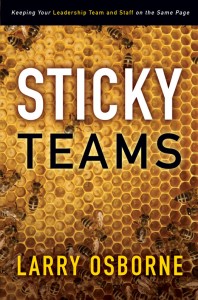

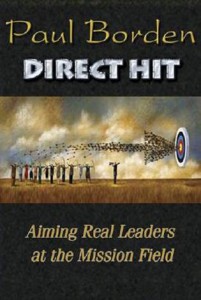
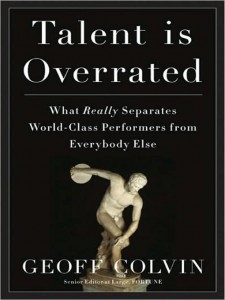
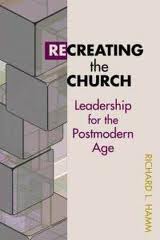
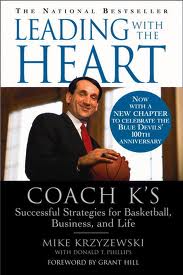

Recent Comments